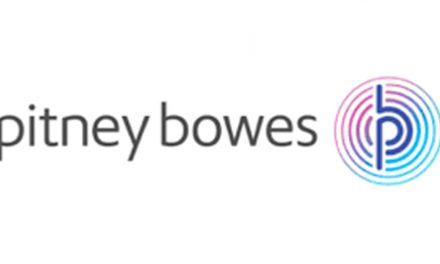
Increasing the value of mail in an era of digital transformation
As the digital age continues to grow at a profound rate, Bernie Gracy, vice president, Strategy & Business Development, Pitney Bowes Inc, discusses the position of the Posts.
Asking the right questions
There is an old joke I heard when I was in college. It goes like this: Two guys decide to start a wholesale potato business. They get a truck, and from a farmer they buy a load of potatoes at fifty cents a pound. When they get to town, they sell the potatoes to the grocer for fifty cents a pound. They operate the business like this for a few weeks and then tally their profits. Realising they have none; one guy turns to the other and says: “Do you think we should get a bigger truck?”
It is a silly story, but it raises a valid strategic point for postal services around the world that are fighting for their financial survival. When facing fundamental challenges to a business model, it is crucial to ask the right question.
Financial challenges
For today’s posts that imperative to ask the right question is more important than ever. Around the world, posts are struggling with declining mail volumes due to digital alternatives plus competition after liberalisation in European postal markets. Earlier this year, the Dutch post and express delivery group TNT reported lower earnings, stating cost cuts and cash generation would remain a focus. TNT is not the only European postal company to do so.
The financial woes faced by the USPS mirror those of its European counterparts. Yet, unlike other posts around the world, the USPS’s business model is restricted by statute and is dependent on its monopoly of letter delivery and competition in parcels for survival.
The financial challenges of posts around the world promise to have a profound impact on mailers, employees, consumers and potentially national budgets. Postal leaders are exploring cost cutting and revenue generating alternatives that will help alleviate these financial pressures. Similar to the two guys and the potato truck, something fundamental has to change in postal operating models.
Rethinking postal operating models
Some of the questions being asked these days are: How can I cut my costs to adjust for lower mail volumes? How can I stimulate volume? How can I reduce labour hours without disrupting my labour force and quality of service? How can I close offices without enraging consumers and local elected officials? What are the legal adjacent spaces where I can gain market entry and compete?
Traditional answers to these questions are steeped in the historical role of postal services. Mail binds a nation together. Mail connects citizens to their government, to each other, and to the companies that want to do business with them. Mail provides a trusted, secure, and universal method of communicating confidential information around the corner or across the country. And yet with ubiquitous wired and wireless broadband, less expensive laptops, netbooks, and smartphones; email, texting, IMs, Facebook, Twitter, ooVoo, and most recently the iPad, there are now numerous digital alternatives available to businesses, governments and consumers to exchange information and build relationships.
Trends in history
With this trend in mind, I am reminded of Henry Adams’ essay The Virgin and the Dynamo. When Adams visited the Great Exposition in Paris in 1900 he was awestruck by the dawning electric civilisation of the twentieth century and the inherent cultural disruption it portended– in contrast to the motive force symbolised by the great medieval cathedrals and centuries of cultural stability in a largely agrarian society.
If Adams were alive today and he was a postal executive, would his essay now be entitled The Mailbox and the iPad? In many regards, postal executives are awestruck by the dawning globally interconnected society of the twenty-first century and the inherent cultural and business disruptions it portends– in contrast to the centuries of stability of the legacy postal business model.
As important as these questions and ponderings of postal executives is, I think, the critical assessment framework which comes from Harvard Business School strategist Clayton Christensen. Christensen, who advises companies facing disruptive competitive pressures, focuses on understanding why customers “hire” their product. For postal operators, that means asking what job is the mail being hired to do? Or conversely, why is mail being fired? And who is responsible for the hiring and the firing?
The importance of the customer’s customers
Postal executives are focused on their customers: the mailers and primarily business entities that pay for postage and shipping. But what about the customer’s customers, the people receiving that letter or package? They are traditionally viewed as a cost of doing business, represented by distribution expenses, labour expenses, fuel, wear and tear, among others. But it is the customer’s customers who order the packages. It is the customer’s customers that ultimately determine if they want physical mail or digital alternatives. They are ultimately responsible for the hiring and firing.
It is therefore incumbent upon posts, mailers, and their technology and services suppliers to work in concert to develop offerings that create more value for the customer’s customers as well as the mailers. Fortunately, mailing technology is also advancing to the point that mailers and consumers can increasingly get exactly what they want and need from the mail channel, and therefore will become more likely to “re-hire” mail for future communications.
For the mailer it is obvious – reducing barriers to attract, retain, and serve customers while reducing costs. For the consumer, in the face of a jobs crisis, credit crisis, health care crisis, and retirement crisis – mail helps them manage their lives.
Transpromo
One good example of the application of mailing technology that benefits mailers and consumers is when a transactional statement is combined with key attributes of a direct mail piece, often called Transpromo technologies. What makes Transpromo unique is its ability to combine variable content, or data from different sources, into one stream of information on a customer. What makes Transpromo most valuable is the combination of a highly trusted document such as a banking statement, credit card statement, tax bill, pension plan or invoice with relevant advice, counsel, and offers in the context of that statement on how customers can best manage their wealth, health, and their lives.
To take the example of healthcare, profitability is linked to a plan member’s health and welfare. Insurers are incentivised to change the behaviour of their clients for a win-win scenario. Some examples include: for patients to use preventative services through their primary care doctors instead of emergency rooms; to use mail order vs. retail pharmacy; to manage their chronic conditions vs. risking worsened health. A Transpromo document with its high openability and read rate is the perfect context for improving profitability while aligning with the member’s need for medical guidance and counsel on how to better manage this or her life.
The same is true for financial services. In these days of financial reform banks and investment houses will earn profits from providing better advice to their customers rather than using their assets in risky derivatives and credit default swaps. Forrester Research reports that consumers who see products in the context of their financial situation are ten times more likely to take action. I know of few venues as effective for assessing the context for their financial situation as a well crafted transactional statement.
In addition, Transpromo technologies have matured to the point where they can lower the barriers between the mailer’s marketing, IT, and operations functions to allow customer insight to drive relevant communications, advice, counsel, and offers in these high open rate vehicles. When effectively applied they offer the opportunity for mail to be rehired by both the mailer and the consumer.
Conclusions
In addition to services and technology, mailers also play an important part in today’s digital age. As referenced previously, the contrast of the Mailbox and the iPad holds the key. Many posts view themselves as a pipe between mailers and consumers; however, it is not the only framework within which to find solutions.
From a consumer’s perspective, the Post is a trusted aggregator and consolidator of mail. Therein is the digital opportunity: where mailers, technology and service providers and posts can lever their assets, capabilities, and brands to repurpose the content inside and outside of the envelope. In this way they can replicate the post’s role as a trusted consolidator and aggregator of mail in a fixed or mobile digital environment. Within this framework, new opportunities exist for posts to play a very relevant role in helping consumers better manage their lives using both physical and digital channels.
This article was published in June 2010’s Mail & Express Review. To subscribe to the industry’s leading quarterly publication, please click here










